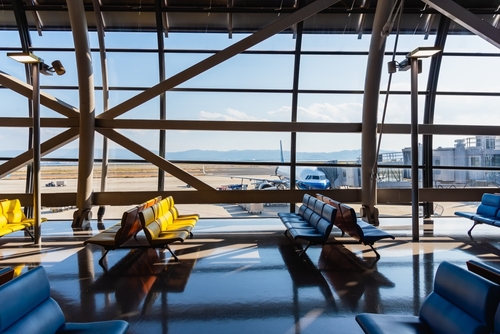Long lines, pricey food, confusing signs, and overzealous security agents—major airports are their own ecosystems, a world of their own. Despite setbacks caused by lockdowns during COVID-19, air travel continues to be the backbone of international connectivity, cultural exchange, and economic growth. According to the International Air Transport Association (IATA), air traffic numbers have surpassed pre-pandemic levels faster than expected.
It’s no surprise that aviation hubs worldwide are expanding as more and more passengers pass through their terminals. Major airports have become gateways to amazing global experiences; that’s why we at Remitly have put together this guide for travelers, both seasoned and new. We’ll help you understand how these hubs work, what makes them stand out, and how they can impact your travel plans.
What makes an airport “major”?
Have you ever found yourself wandering through a surprisingly small international airport and wondered how it got the title?
Not all airports qualify as a “major” player, even if they have the “international” tag in their name. Airports must meet specific requirements to be considered major travel hubs.
Defining criteria
Major airports are measured and ranked internationally using specific criteria, including the following:
- Airport capacity: This isn’t just about the number of passengers an airport can hold, but also how many planes and flights it can serve simultaneously.
- International connections: Does the airport offer limited international connections, or can you find a flight to almost anywhere in the world?
- Cargo capacity and facilities: Freight handling plays a key role in these rankings, as it proves how well an airport can follow customs processes and move goods across borders.
- Customs and Border Protection (CBP) presence: Allows airports to verify passports, inspect cargo, and enforce laws related to agriculture or immigration.
Additionally, these aviation hubs play a vital role in the global economy. Whether by supporting tourism, creating direct jobs, or supporting trade, international airports stimulate the demand and flow of goods and services around the world.
Hub vs. destination airports
Now that we’ve explored what defines major travel hubs, let’s break things down even more to distinguish the two most common types:
- Hub airports are centralized aviation gateways that function as transfer points for both domestic and international passenger transfers, connecting flights to and from smaller airports.
- Destination airports are smaller facilities that serve primarily as endpoints for flights from bigger hub airports or as part of a route with limited connections. Orlando International Airport (MCO) is a good example.
Most major airports are hybrids of these two and are central to global travel networks, offering the most flights and connections possible for passengers and cargo.
The powerhouses: top 10 major airports worldwide
When we talk about major airports, what we really mean is global gateways—hubs that can take you almost anywhere in the world. Here’s a list of the ten biggest airports in the US and across the globe to help you better plan your future trips.
US & North American leaders
Hartsfield-Jackson Atlanta International Airport (ATL)
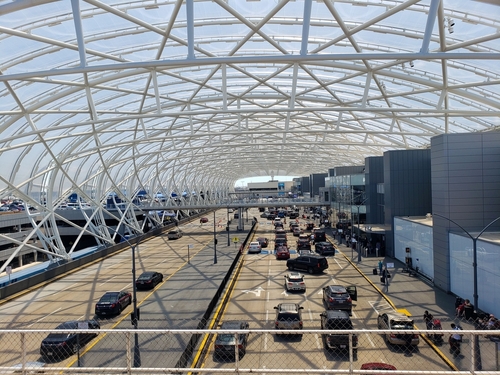
Often ranked one of the busiest airports in the world, ATL isn’t just a major American travel hub, but a global one too. So, if you’re traveling around the US, flying through Atlanta could make domestic travel far easier than other airports with limited local airport connections.
- Strengths: Unmatched domestic connectivity in the US, with numerous international connections.
- Tip: International arrivals must collect their bags and re-do the security check to connect on domestic flights, even as US citizens, so plan accordingly for these extra steps.
John F. Kennedy International Airport (JFK)
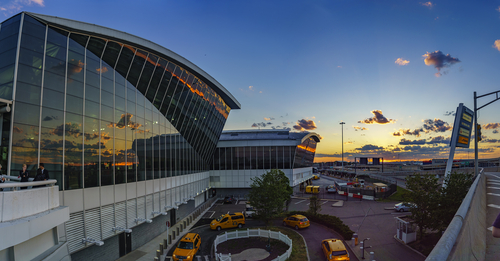
JFK is New York City’s main international airport, and it’s also the most famous. The facility served over 63 million passengers in 2024 alone. This major hub has the most transatlantic flight offerings, with direct flights to almost every European capital.
- Strengths: Extensive long-haul options with strong connections to Europe and the rest of the world.
- Tip: Congestion and traffic cause a lot of delays, especially if you’re trying to get to JFK from Manhattan. You can save money and avoid traffic jams by taking the public AirTrain.
Los Angeles International Airport (LAX)
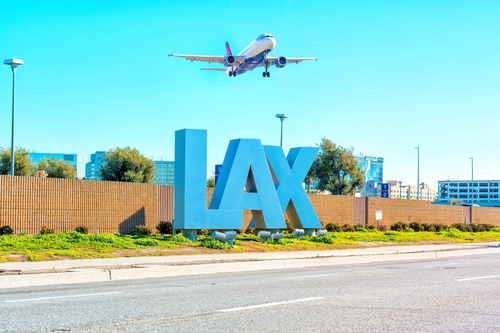
If you’re heading west, then LAX is your best bet. As a large hub with great connection options, LAX regularly ranks among America’s busiest airports.
- Strengths: It’s a gateway to Asia-Pacific destinations and a step away from Hollywood, if you have a long enough layover to see some sights and enjoy the weather.
- Tip: The LAX FlyAway bus service can easily take you to locations like Van Nuys and Union Station.
European giants
London Heathrow International Airport (LHR)
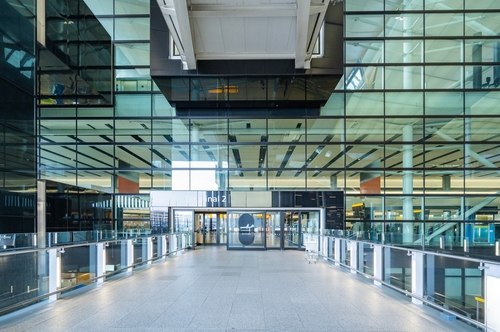
The UK’s most traveled airport remains one of the world’s top international hubs, with flights to 234 destinations across 85 countries.
- Strengths: Extensive transatlantic flights, premium lounges, and luxury shopping upgrade the passenger experience in this behemoth of an airport.
- Tip: Get to the LHR early to avoid traffic and ensure you don’t get stuck behind long lines. Terminal 5, home to British Airways, often offers the smoothest experience.
Amsterdam Airport Schiphol (AMS)
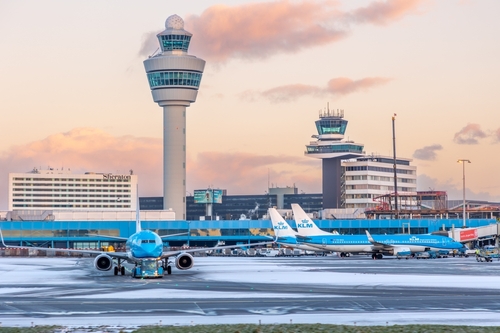
Schiphol was designed to make connections as stress-free as possible. This major hub continues to serve millions of passengers each year within a single terminal to lessen long transfers and create a smoother transit experience.
- Strengths: One terminal makes this the easiest airport to navigate, which is a highlight for this central European facility. Meanwhile, art installations from Rijkmuseum make it feel like you’ve stepped out of the airport and into another world.
- Tip: AMS is the perfect place for short layovers. On average, you’ll need only 90 minutes to connect to your next flight.
Frankfurt Airport (FRA)
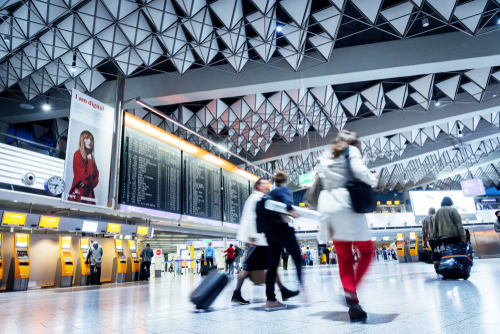
Germany’s largest airport and one of Europe’s busiest, FRA serves as Lufthansa’s central hub and is also among the world’s largest cargo airports.
- Strengths: Mediation, yoga rooms, massages, or even movie lounges are just some amenities you can access to pass the time and de-stress before your next flight.
- Tip: Frankfurt Airport is massive. Budget your time well if you need to change terminals.
Paris Charles de Gaulle Airport (CDG)
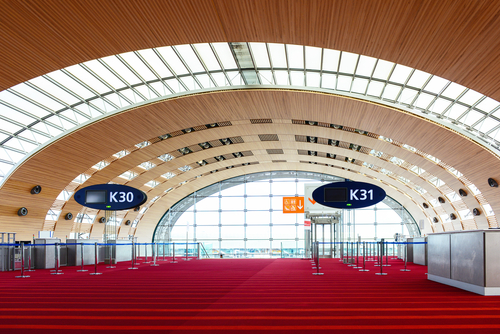
France’s largest airport is rated as one of the top ten busiest airports in the world. CDG is also Air France’s global hub, so if you’re a SkyTeam alliance member, flying through Paris might be a great way to rack up those miles.
- Strengths: Offers an extensive long-haul network with many connections to Africa and the Middle East
- Tip: CDG is quite large, especially if you need to get from Terminal 1 to Terminal 2. Consider booking flights with enough time between connections, so you don’t have to run to your next gate.
Asia-Pacific gateways
Narita International Airport (NRT)
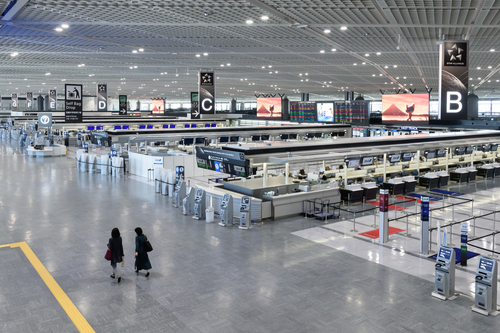
Rated a five-star airport, there’s much to enjoy while passing through this airport in Japan, including some of the best dining experiences around.
- Strengths: Narita handles much of Japan’s long-haul international traffic, making it easy to move across the world and throughout the country.
- Tip: Tokyo splits international traffic between Narita, the core hub, and Haneda (HND), which is much closer to central Tokyo but only handles some long-haul flights.
Hong Kong International Airport (HKG)
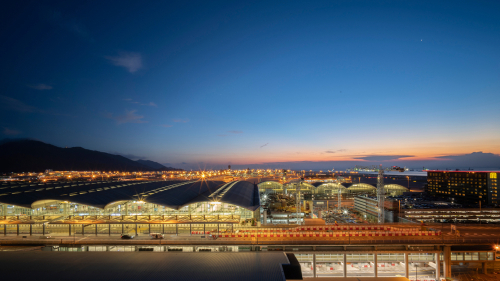
In 2024, HKG was named the busiest cargo airport for the 13th time, only losing out on the top spot in 2020 due to the pandemic.
- Strengths: Excellent transit facilities, top-rated lounges, and a Cathay Pacific hub.
- Tip: Fast ferry links to Macau and Pearl River Delta cities can save time.
Middle Eastern powerhouse
Dubai International Airport (DXB)
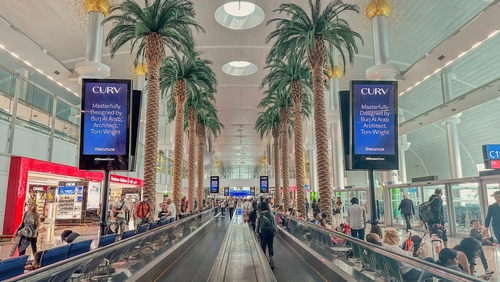
DXB consistently ranks as one of the world’s best international airports, known for its luxury shopping, fine dining, and top-notch lounge experience.
- Strengths: Global hub for Emirates, with easy one-stop connections between Europe, Asia, and Africa.
- Tip: Great for long-haul layovers, thanks to sleeping pods and 24/7 amenities.
Why these airports matter for global travel
Major airports don’t just move passengers—they shape how we connect with the world, all while spurring the growth of local economies.
Ensuring affordability and local connections
When searching for flights, you might’ve noticed that major hubs tend to offer more options than smaller, closer destination airports, making tickets far more affordable.
This is because of the hub-and-spoke model, which allows airports to funnel traffic through central hubs. It’s an innovative approach that makes international travel more efficient while spreading the benefits to smaller facilities.
Driving tourism and business
These hubs provide a rich experience for travelers, no matter how seasoned they are. But it also helps local communities grow in many different ways. For example, an airport like LAX:
- Supports thousands of employment opportunities—LAX created 547,000 jobs in 2018 alone.
- Boosts infrastructure growth, such as roads and rail to ferry tourists.
- Encourages the development of hotels, retail stores, and other amenities to serve travelers.
- Offers cultural exchange.
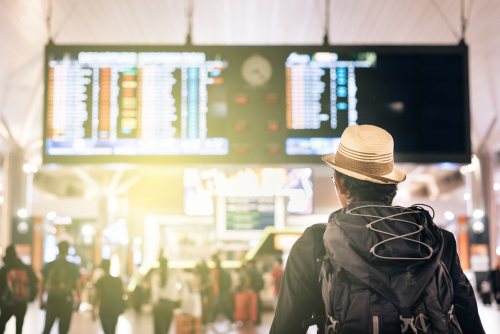
Major airports travel tips
Flying through these huge major airports doesn’t have to feel overwhelming. Follow these simple tips to make your journey unforgettable:
Connecting strategies
- Arrival time: For larger airports like JFK or Atlanta, consider heading to the airport three hours before your flight to ensure you have time to check your bags and get through security.
- Connection timing: Consider your connection, airport, and transit rules before you buy that ticket with a very short layover time.
- Transfers from international to domestic flights: For international travelers or those returning from abroad, transferring to domestic flights in the US requires going through security and border control before you can connect.
- Border Control: Mobile Passport Control can help you avoid those long, long lines and get back home faster.
Technology and efficiency
Save yourself even more time by taking advantage of the latest technology.
- Biometric boarding: Facial recognition to help verify your identity can move you through security quickly.
- Mobile apps: Airlines and airports have apps that provide real-time information about your flights, sometimes before they’re announced within the airport.
- Security: TSA Precheck and Global Entry are great options for checking in early.
Airport amenities and services
These days, traveling through a major airport is often a luxurious experience, especially with a decent layover. During your downtime, you can enjoy Michelin-star food, premium lounges, sleeping pods, and more, depending on the airport and carrier.
The future of major airports
More airports are adopting green solutions to boost efficiency. From solar farms to electric ground fleets to help cut emissions, many hubs are committed to making the airways cleaner and safer.
Another trend to watch out for is the increasing focus on travelers’ needs. Most major airports now feature wellness zones, co-working lounges, and better systems to reduce lost luggage.
With more and more people flying each year, these travel hubs are working hard to create a better experience for everyone.
Your next adventure is only one major airport away
Major airports are more than just stopovers—they’re our way of connecting to the rest of the world. As a gateway to new cultures, the experience in these aviation hubs is unmatched compared to smaller, destination airports.
Whether you’re rushing through Atlanta or exploring the luxury shopping in Dubai, these airports are part of the adventure, not just an obstacle to endure until you reach your next gate.
For your next vacation, consider flying through a major hub—you’ll be surprised at how much there is to do and see before you even get on the plane.
FAQ
Which airport handles the most international passengers?
Dubai International (DXB) is currently ranked as one of the busiest airports in the world, serving the highest number of international passengers.
What’s the difference between a hub airport and a regular airport?
Hub airports offer extensive connections and long-haul flights across the globe, whereas destination airports tend to have limited connections and flight options.
How early should I arrive at a major international airport?
It’s advised to arrive three hours before your international flight to ensure you have time to check your bags and go through security and border control.
Are major airports more expensive for flights than smaller ones?
Major airports tend to have more affordable flights due to their hub-and-spoke models, which funnel traffic and allow for more connections.
Which major airports are best for long layovers?
Dubai is one of the best major hubs for long layovers, along with Frankfurt Airport. They both offer extensive amenities to keep you occupied while you’re waiting on the ground.
